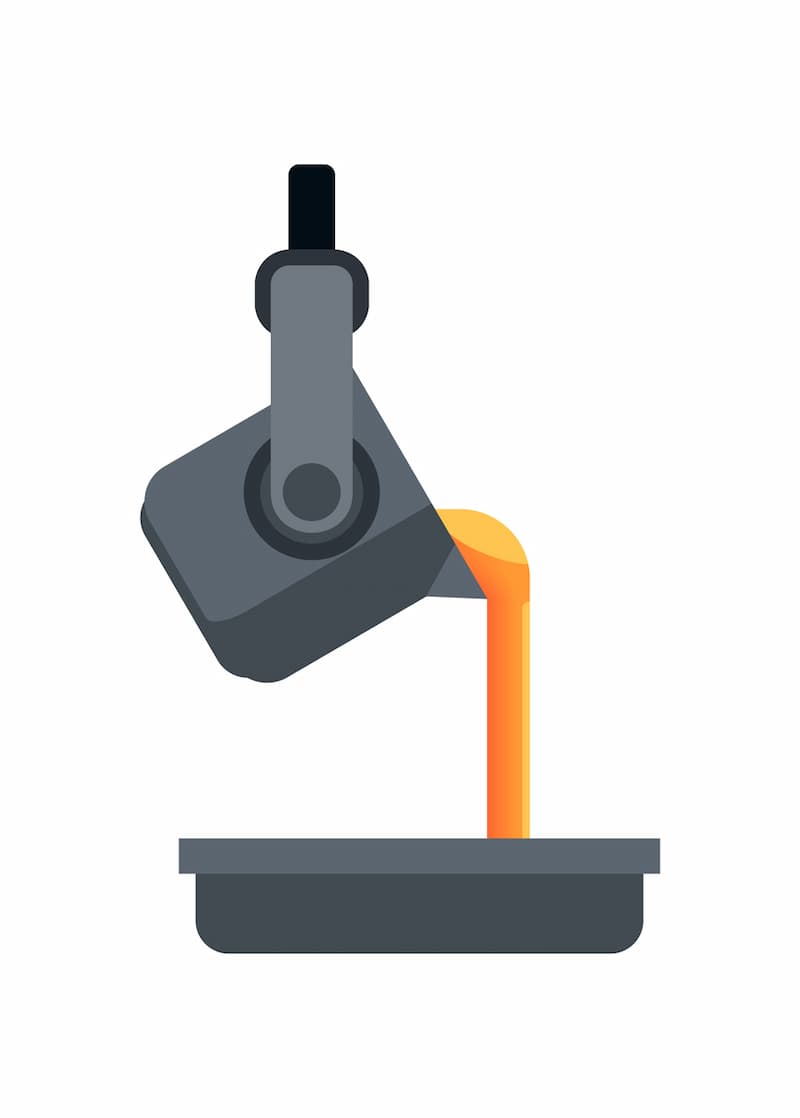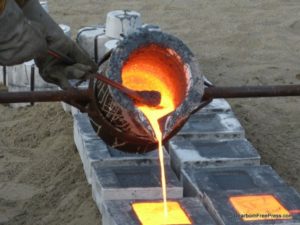Exploring Metal Castings and their diverse uses across multiple industries
Wiki Article
The Role of Metal Casting ahead of time Manufacturing Technologies
Metal Casting have significantly affected the advancement of making technologies. They provide special style adaptability, making it possible for the creation of intricate geometries vital for different applications. Modern casting methods are being improved by advancements like 3D printing and automation. These advancements not just enhance performance yet additionally address obstacles in accuracy and sustainability. As markets proceed to develop, the role of Metal Casting remains vital in shaping their future. What exists in advance in this vibrant field?The Development of Steel Casting Techniques
As the need for accuracy and effectiveness in manufacturing has expanded, the development of Metal Casting techniques has undertaken considerable change. Historically, Metal Casting began with straightforward approaches such as sand casting and lost-wax casting, which permitted artisans to create detailed shapes. Over time, innovations in innovation introduced procedures like die casting and financial investment casting, boosting precision and decreasing waste. Metal Castings. The intro of computer-aided style (CAD) and simulation software reinvented the drawing board, enabling suppliers to anticipate potential concerns and enhance layouts before manufacturing. Additionally, the growth of new materials, such as innovative alloys and composites, has widened the scope of applications for Metal Casting. Automation and robotics have more polished casting procedures, boosting consistency and effectiveness. Therefore, the Metal Casting market has actually adjusted to meet the requirements of modern-day manufacturing, focusing on sustainability and advancement to continue to be competitive in an ever-evolving market
Applications of Metal Casting in Trick Industries
The developments in Metal Casting methods have actually opened a wide range of applications throughout numerous sectors. In the automotive industry, Metal Casting are important for generating engine blocks, transmission real estates, and other vital elements that call for high toughness and resilience. The aerospace industry uses castings for complex components like generator blades and architectural parts, making certain lightweight yet durable remedies for aircraft.
Moreover, the building sector employs Metal Casting for structural aspects such as fittings and beam of lights, adding to the integrity of buildings and facilities. In the energy market, spreadings play a critical role in manufacturing components for wind turbines and power generation equipment, enhancing efficiency and reliability. Additionally, the medical field take advantage of precision castings used in surgical instruments and prosthetics, demonstrating the flexibility of Metal Casting across diverse applications. This wide utilization underscores the significance of Metal Casting in modern production techniques.
Advantages of Metal Casting in Modern Production
Metal Casting provide various advantages that significantly enhance modern production procedures. One essential benefit is design flexibility; Metal Casting permits the production of intricate shapes and elaborate geometries that are difficult or commonly challenging to achieve with various other producing methods. This capacity allows producers to maximize item designs for capability and performance.Additionally, Metal Casting can sustain a broad range of materials, including steel, iron, and aluminum, which can be customized to meet details mechanical buildings and rust resistance needs.

Cost-effectiveness is an additional significant advantage; Metal Casting processes can generate big quantities of get rid of marginal material waste, thereby decreasing production costs.
In addition, the longevity of actors metal parts adds to the longevity of items, decreasing the need for constant replacements. On the whole, the benefits of Metal Casting considerably add to efficiency, sustainability, and technology within modern production environments.
Technologies Driving the Future of Metal Casting
While conventional Metal Casting strategies have offered the sector well for decades, current innovations are poised to change the field. Breakthroughs such as 3D printing technology permit quick prototyping and the production of complicated geometries that were formerly unattainable. These innovations not only boost layout flexibility however additionally reduce waste and shorten preparations. Furthermore, the integration of automation and robotics in casting processes is enhancing procedures, boosting accuracy, and enhancing worker security. The growth of composite products and brand-new alloys is making it possible for the creation of stronger, lighter castings tailored for certain applications. Digital modern technologies, consisting of man-made knowledge and equipment understanding, are maximizing spreading criteria and anticipating upkeep, driving enhanced quality assurance. Collectively, these developments are pushing the boundaries of Metal Casting, cultivating better performance and sustainability in production, and positioning the industry for future development and competition.Difficulties and Solutions in Metal Casting Processes
As developments in Metal Casting technology remain to improve the market, various challenges continue to be that makers need to address to totally utilize these advancements. One significant concern is the irregularity in material homes, which can lead to irregular high quality and performance. This irregularity commonly results from variations in basic materials and processing problems. Additionally, the climbing costs of power and materials posture financial restraints, pushing suppliers to seek extra effective procedures.To fight these obstacles, business are significantly embracing automated systems and progressed simulation techniques to improve accuracy and consistency. Carrying out quality control procedures throughout the production process likewise aids in discovering Aluminum Foundry issues early. Furthermore, buying research for alternate products might boost and reduce expenses sustainability. By addressing these challenges with ingenious options, the Metal Casting sector can boost productivity and maintain competitiveness in the developing manufacturing landscape.
Often Asked Concerns
What Products Are Generally Made Use Of in Steel Casting Procedures?
Typical materials utilized in Metal Casting processes include aluminum, iron, bronze, and magnesium. Each material has unique residential or commercial properties that cater to different applications, enhancing the flexibility and functionality of the last actors items in different markets.Exactly How Do Environmental Regulations Influence Metal Casting Procedures?
Ecological policies oblige Metal Casting operations to adopt cleaner methods and innovations, typically enhancing production prices. Conformity may lead to cutting-edge processes that decrease waste and emissions, inevitably promoting sustainability within the Metal Casting sector.What Are the Safety And Security Procedures in Metal Casting Facilities?
Precaution in Metal Casting centers include correct ventilation, personal safety equipment, routine safety training, tools maintenance, and adherence to safety and security policies, ensuring a safe environment for employees while reducing threats connected with unsafe materials and procedures.How Is Top quality Controlled in the Metal Casting Process?
Quality control in Metal Casting includes extensive assessments, consisting of visual evaluations, dimensional checks, and product screening. Adherence to market requirements and carrying out high quality administration systems ensures that spreadings satisfy specified requirements throughout the manufacturing process.
What Is the Future Job Outlook for Metal Casting Professionals?
The future work expectation for Metal Casting specialists shows up appealing, driven by developments in technology and increasing need throughout different industries (Aluminum Castings). Development in automation and lasting methods will likely create brand-new chances in this industryHistorically, Metal Casting started with straightforward techniques such as sand casting and lost-wax spreading, which enabled artisans to develop complex shapes. Over time, innovations in innovation introduced procedures like die casting and financial investment spreading, enhancing accuracy and decreasing waste. In enhancement, the medical area benefits from accuracy castings made use of in surgical tools and prosthetics, demonstrating the versatility of Metal Casting throughout diverse applications. Metal Casting use numerous benefits that greatly boost modern production processes. Typical products utilized in Metal Casting procedures include aluminum, magnesium, bronze, and iron.
Report this wiki page